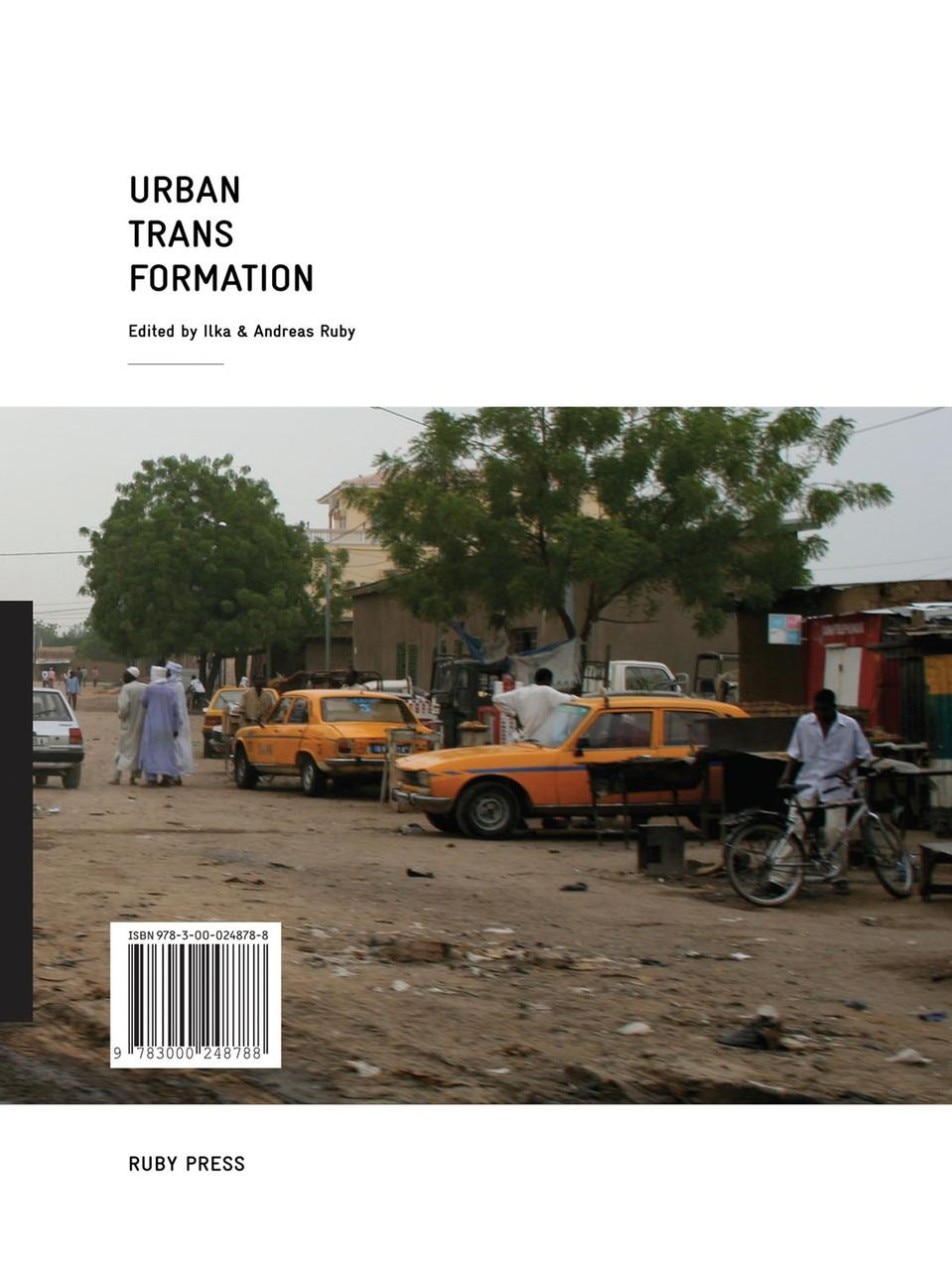Urban transformation
Edited by Ilka & Andreas Ruby, Ruby Press, Berlin 2008 (pp. 400, s.i.p.)
In recent years one couldn’t attend a conference on or read essays about the state of the contemporary city without being forcefully exposed to the fact that today half of the world lives in cities. The United Nations acts as a legitimate whistleblower for this, while the statistical reality of a half-half world created a sense of urgency to deal with all matters urban, leading to an proliferation of exhibitions, conferences and publications dedicated to the subject of the city. The point of departure of Urban Transformations, edited by Ilka and Andreas Ruby (Ruby Press), is that “as opposed to the colonial era of the 19th century, the term ‘urban’ today no longer indexes a normative cultural concept - such as expressed, for instance, in the “European City” - but represents a cosmos of extremely varied notions determined by geographical, cultural, and individual preferences.” The publication is inspired by the international Holcim Forum 2007 held in Shanghai on the topic of Urban Transformation. In addition to a selection of papers presented at the conference, the editors invited additional contributors so as to present “a global dérive through emerging urban conditions in five continents, seen through the eyes of more than fifty international architects, urban planners, politicians, and artists.” Unfortunately, in order to position the forum’s intentions and the editors’ decisions, throughout the book it is never clear who participated in the forum and who was asked for additional contributions.
The book takes as its point of departure a double failure: on one hand the failure of the big urban narrative of modernism, on the other the failure of post-modernism to retrodate the present city to a past that never existed. As opposed to this the editors hint to the idea of the city as a multitude of conditions that do not conform to one universal model. There are arguments to defend this position, but while reading the book, structured along five inbetween themes (ecology and economy, global and local, public and private, sanctioned and shadow order, permanent and transitory, standard and appropriation), it was hard not to think about the book and its content, even within the themes, as a collection of scattered contributions by seemingly randomly selected authors and architects. Different scales of research, scopes of interests, research topics and methods of analysis are all loosely, and often inconsistently, put next to each other. The overall promise of a multitude turns into a myriad of examples that, after a while, starts one wondering, “Why?” This doesn’t mean that the book doesn’t offer any contribution to the ongoing debate on what “urban” means today, but it has done too much, thereby sidetracking itself and loosing focus constantly. The specific background knowledge one needs in order to understand the urban dilemmas that one author describes stands in opposition to well-known generic contributions by other authors. Maybe an additional chapter, called “In-between Nothing and Everything”, could have been a critical point of self-reflection.
The highlights of the publication are the contributions by Saskia Sassen (Cityness), Supersudaca (Caribbean Strips), Ting- Ting Zhang and William Tan (Singapore’s Schizophrenic Urbanism), Minsuk Cho (Seoul), Teddy Cruz (Mexico-US Border), Deane Simpson (RV Community in the US), Manuel Herz (Refugee Camps) and Elemental (Social Housing in Chile), and the intelligent analysis of Srdjan Jovanovic Weiss on the rise and fall, the architecture and planning, of Turbo Architecture, “the bastard child of glitzy-coporate and folk-nationalist architecture” during the era of Slobodan Miloševic. Surprisingly, these contributions each hint at the point that through careful analysis and contributions to specific conditions the possibility of a universal model of urban analysis and architectural contribution is still possible and legitimate. Each of them manage to bring in their contributions a multitude of political, social, architectural and economic perspectives into relation with each other. After struggling for much of the book, I wondered if the editors obscured the real problem by overload and a weird fascination for the number 50? Urban Transformation is surely a sign of the times, maybe varied in a negative way, and it might have been better to call this book Lost in Transformation, Lost in Urbanization.

